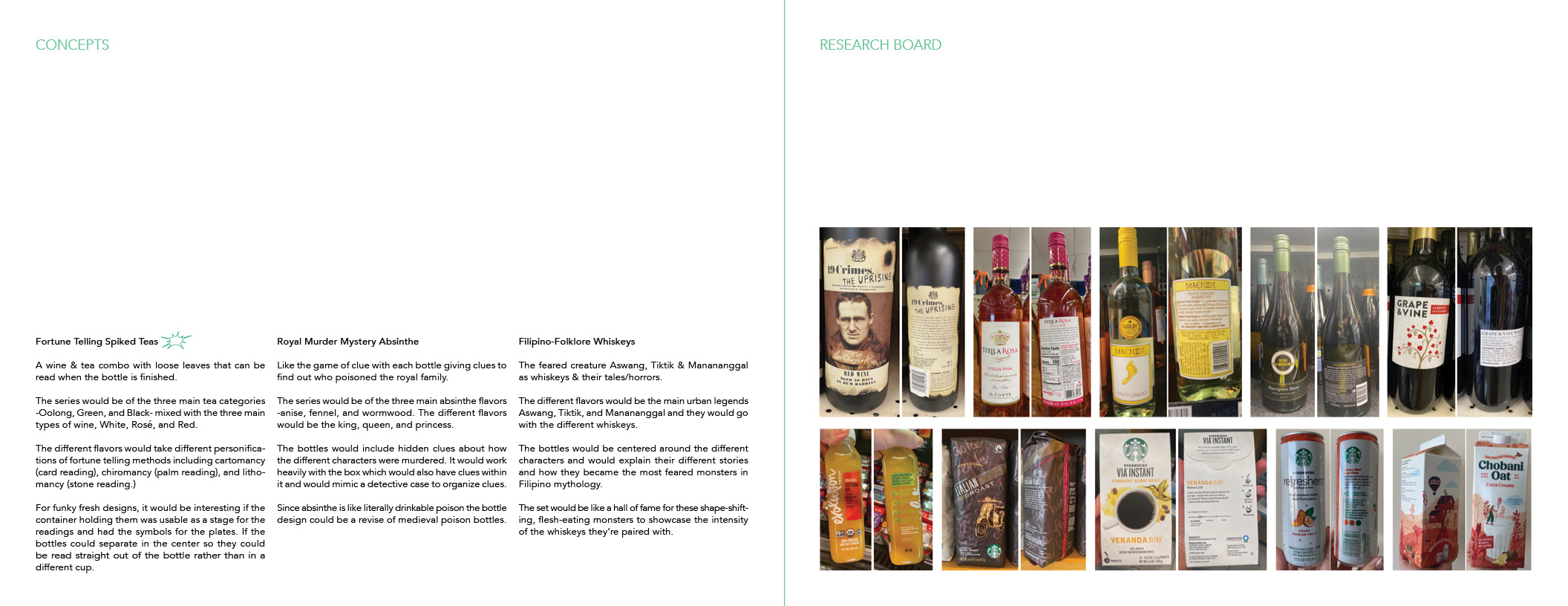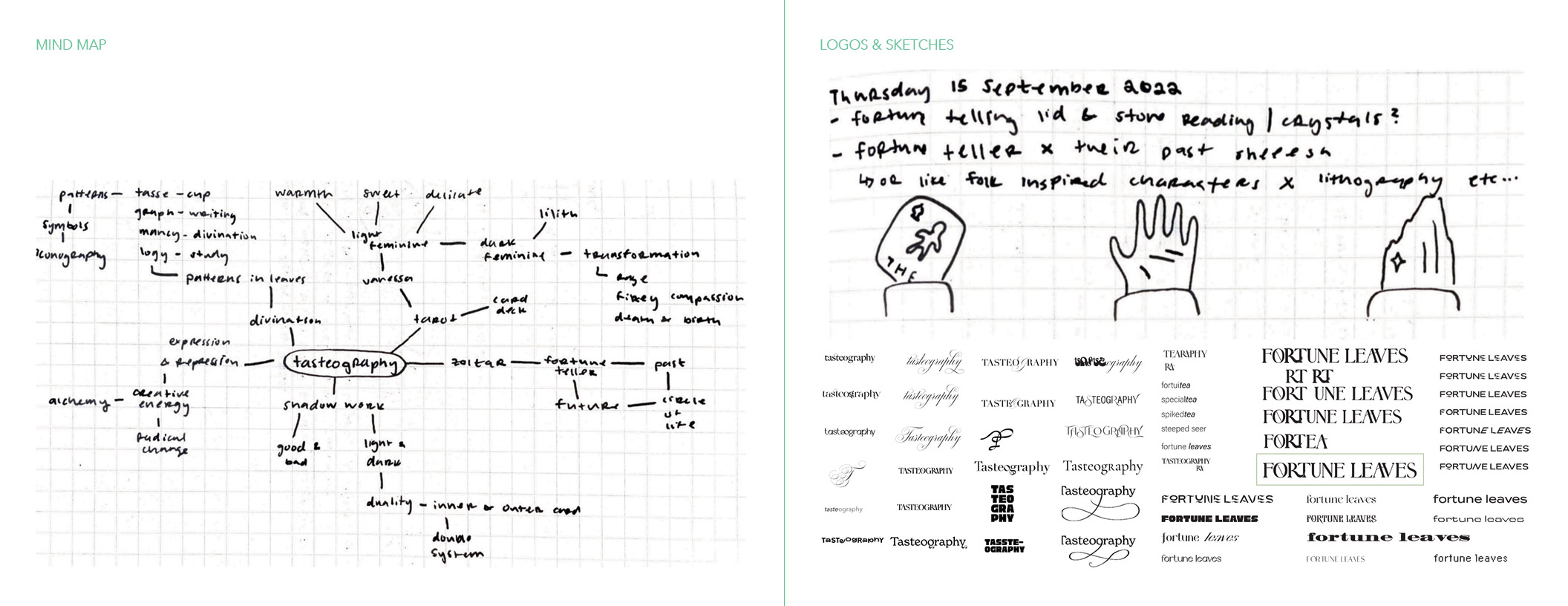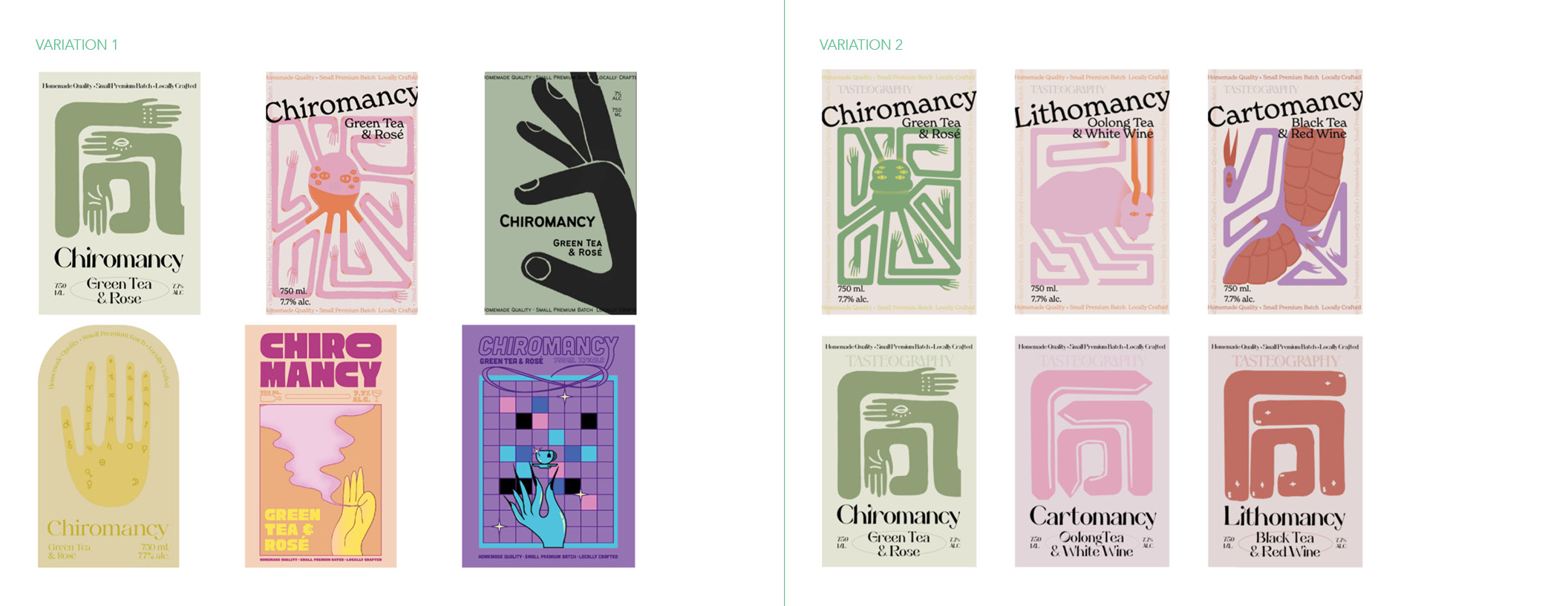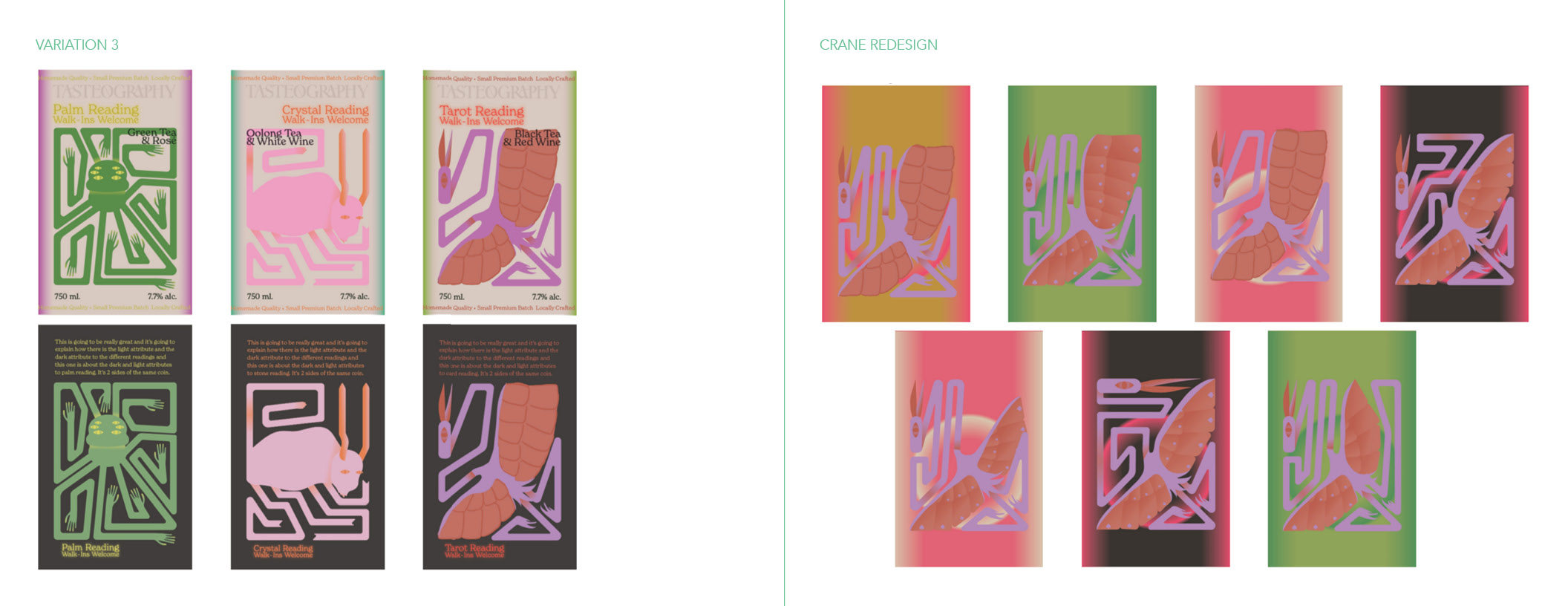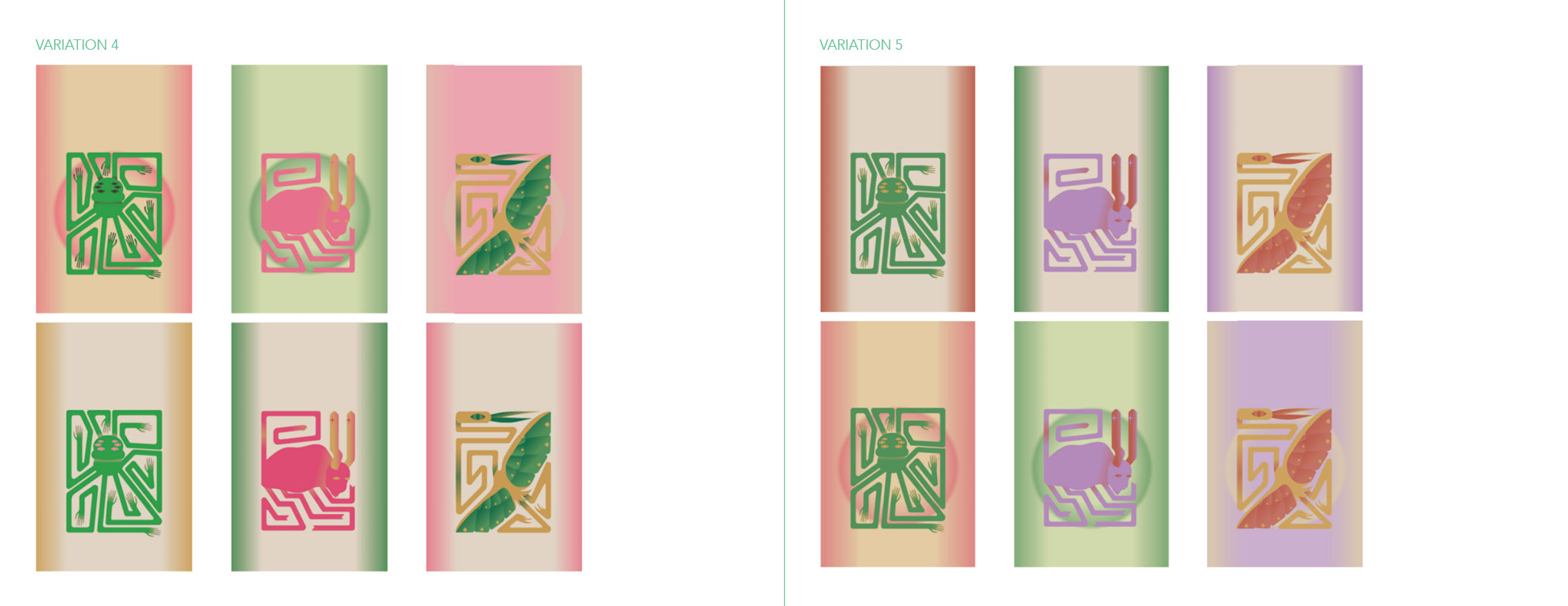fortune leaves

This fortune telling-based company creates wine-infused teas, with a collection that includes peach tea with red wine, jasmine tea with rose wine, and green tea with white wine. The bottles themselves can be used to read the customer’s future as well. The tea is left to strain through the neck of the bottle, leaving leaves at the bottom when finished. The neck and base of the bottle disconnect, allowing the leaves to be read and the bottle to be used again.
Juried Senior Showcase SCAD, 2023
Juried Senior Showcase SCAD, 2023
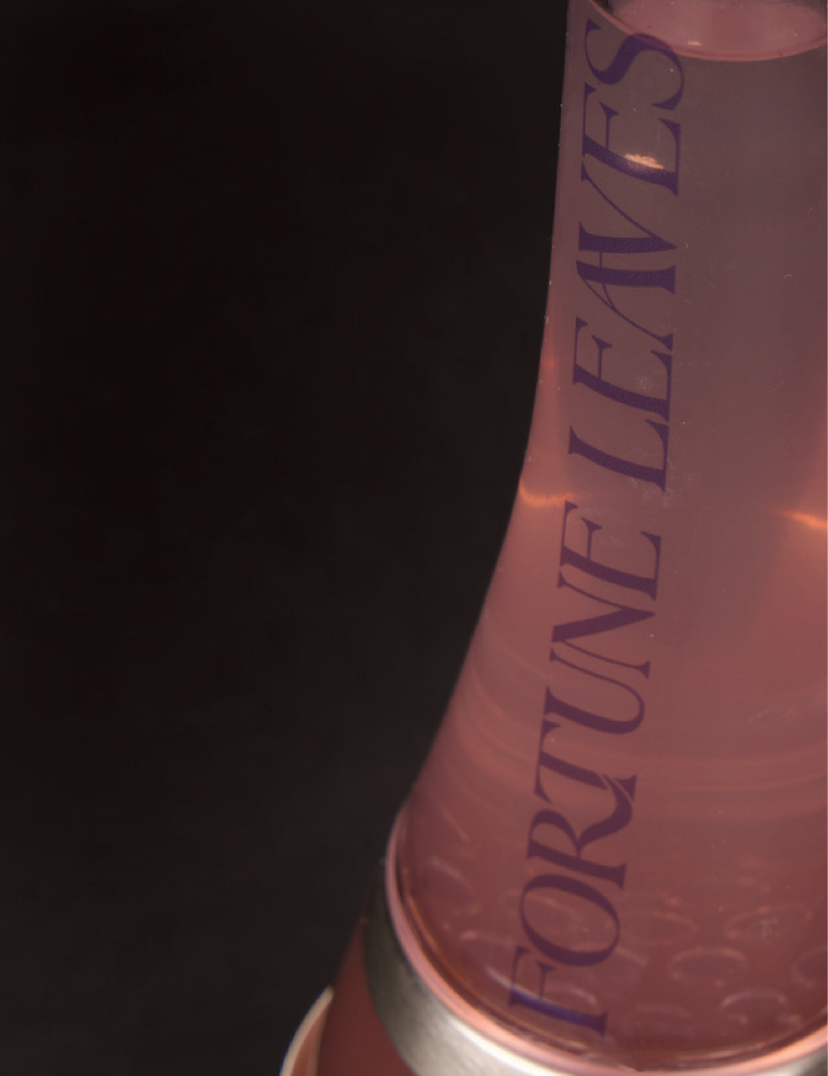


Each bottle includes their own method for fortune telling. There is crystal reading (lithomancy), card reading (cartomancy), and palm reading (chiromancy). Each is visually personified with a character that is relevant towards their respective fortune telling method; a crane is with cartomancy since they are both reflective of air, a bull is with lithomancy since both are in association with the Earth, and a spider is with chiromancy to showcase palm reading and the many arms of the arachnid.

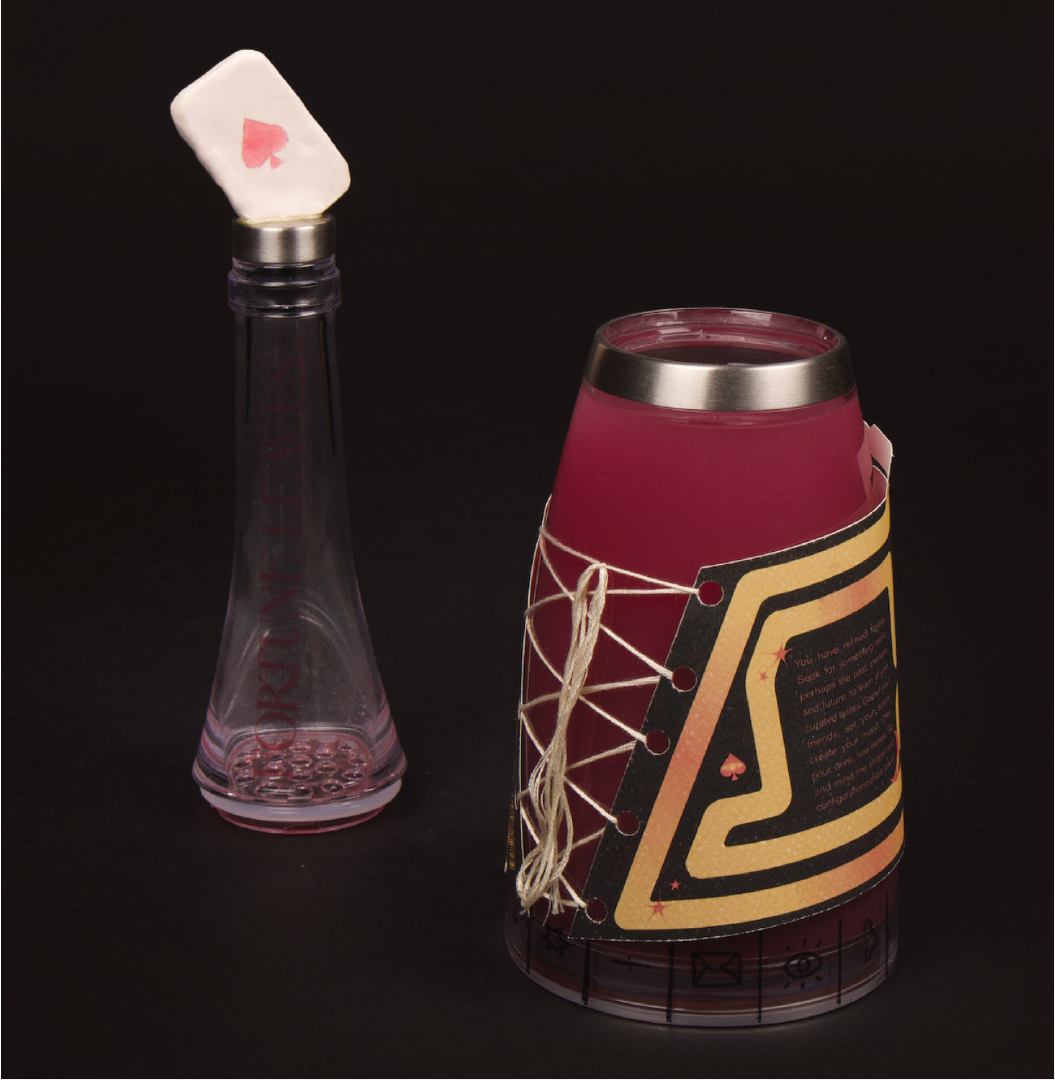

The external packaging of each individual bottle also correlates to their given personas. The chiromancy packaging includes a panel informing the customer how to read their own palm. The cartomancy box teaches its user how to read a three card tarot spread and set up the structure. The lithomancy packaging includes how to read runes.
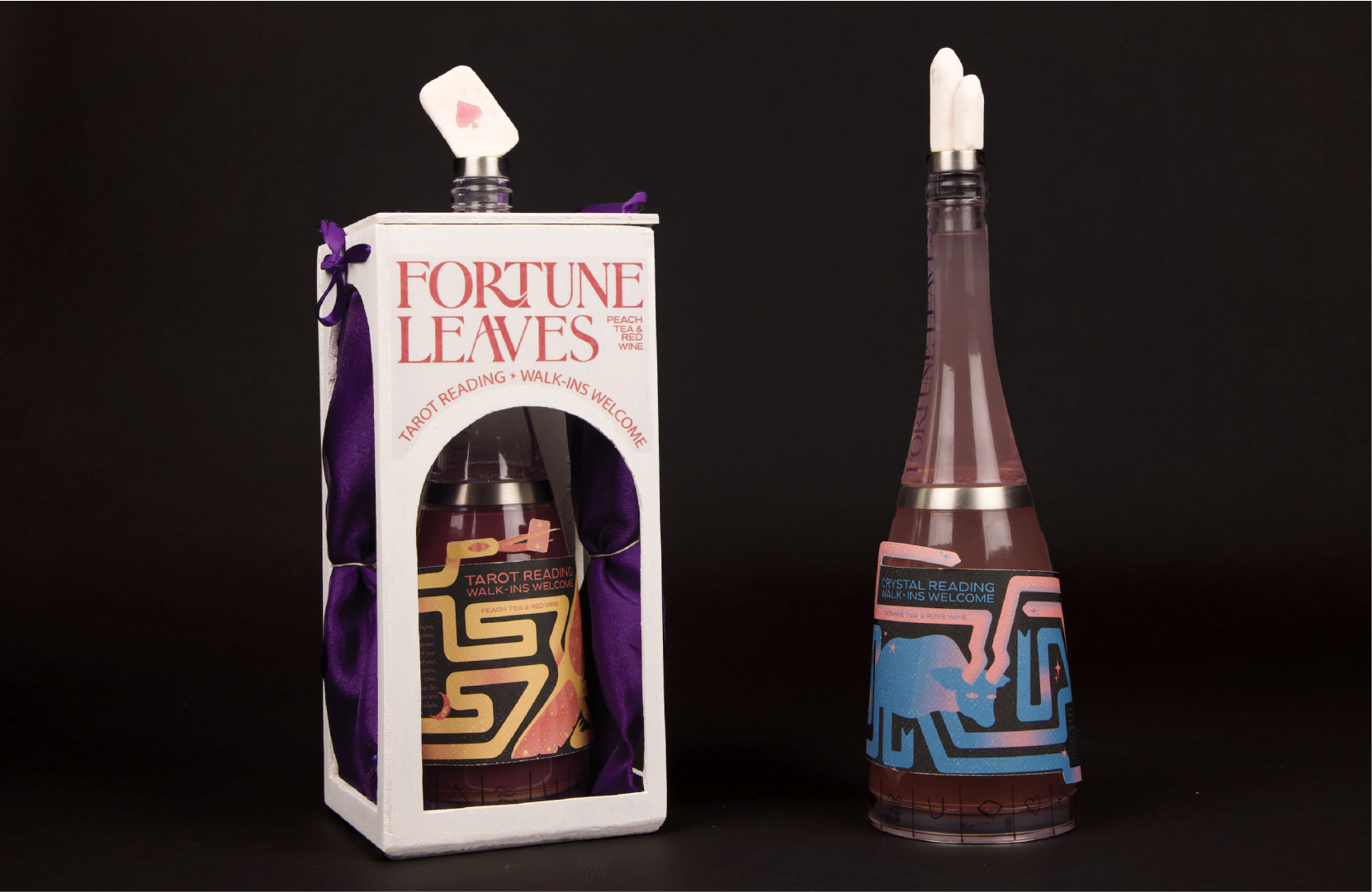


The theme was to create packaging that would be reflective of a modern Zoltar machine, tarot decks, and other typically known fortune telling devices. They are seen as more approachable since often times they are stigmatized as being dark, mystical, and deceptive. However, they have a very specific visual language, jumping between French 18th century illustrations in tarot and stereotypical depictions of Romani people (usually confused with Egyptian peoples). This is something completely avoided to break away from the offensive way fortune telling and specific groups of people have been visualized and appropriated.
Photography by Snigdha Gopidi and Fai McCurdy
Photography by Snigdha Gopidi and Fai McCurdy



Process Book:

